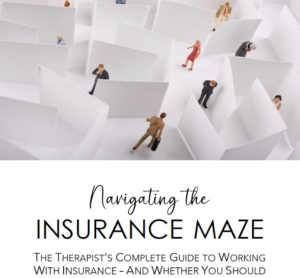Introduction
Embarking on international adventures holds the promise of enriching experiences, but with the thrill of travel comes the responsibility of ensuring your safety and well-being. International travel insurance for US citizens is a key component in safeguarding against unforeseen circumstances, offering peace of mind as you explore the world. In this detailed guide, we’ll take you through the step-by-step process of understanding the importance of international travel insurance, selecting the right coverage, factors influencing costs, and practical tips for a worry-free journey.
Step 1: Recognizing the Importance of International Travel Insurance
a. Understanding Travel Risks
International travel introduces a range of potential risks, including medical emergencies, trip cancellations, lost baggage, and unexpected travel disruptions. Travel insurance serves as a safety net, mitigating the financial impact of these unforeseen events.
b. Medical Emergency Coverage
One of the primary benefits of international travel insurance is medical coverage. In the event of illness or injury abroad, having insurance ensures access to medical care without the burden of exorbitant out-of-pocket expenses.
c. Financial Protection for Trip Investments
Travel plans can be disrupted for various reasons, such as flight cancellations, trip interruptions, or unforeseen emergencies. Travel insurance provides financial protection, reimbursing you for non-refundable expenses.
Step 2: Assessing Your Travel Needs
a. Determining Trip Duration
Evaluate the duration of your international trip. Some insurance policies are designed for short-term travel, while others offer coverage for extended stays, such as long-term vacations or work assignments abroad.
b. Considering Destination and Activities
The destination and planned activities play a role in choosing the right coverage. Some regions may pose higher health and safety risks, and certain activities (such as adventure sports) may require specialized coverage.
c. Reviewing Existing Coverage
Review your existing insurance coverage, including health insurance and credit card benefits. Understanding your current coverage helps identify gaps that travel insurance can fill.
Step 3: Choosing the Right International Travel Insurance Coverage
a. Types of Travel Insurance Policies
Explore different types of travel insurance policies. Common options include comprehensive travel insurance, which covers a range of risks, and specialized policies like medical-only coverage or trip cancellation insurance.
b. Key Components of Coverage
Understand the key components of coverage. Look for policies that include emergency medical coverage, trip cancellation/interruption benefits, coverage for lost or delayed baggage, and 24/7 assistance services.
c. Optional Coverage Add-Ons
Some policies offer optional add-ons for specific needs. Consider add-ons like adventure sports coverage, rental car insurance, or coverage for pre-existing medical conditions based on your requirements.
Step 4: Factors Affecting International Travel Insurance Costs
a. Age and Health Status
Your age and health can impact insurance costs. Older travelers or those with pre-existing medical conditions may face higher premiums due to increased health risks.
b. Trip Duration and Destination
Longer trips and travel to destinations with higher healthcare costs may result in higher insurance premiums. Assess your travel plans and choose coverage that aligns with your itinerary.
c. Coverage Limits and Deductibles
Evaluate coverage limits and deductibles. Higher coverage limits and lower deductibles generally result in higher premiums. Balance your preferences with your budgetary considerations.
d. Type of Coverage and Policy Inclusions
The type of coverage and policy inclusions influence costs. Comprehensive coverage with a wide range of benefits may be more expensive, but it provides extensive protection.
e. Travel Insurance Provider
Insurance providers may offer different rates for similar coverage. Research reputable providers, read reviews, and obtain quotes from multiple sources to find the best value for your needs.
Step 5: Obtaining International Travel Insurance Quotes
a. Researching Reputable Providers
Begin by researching reputable travel insurance providers. Look for companies with positive customer reviews, strong financial stability, and a track record of reliable claims processing.
b. Requesting Quotes
Contact multiple insurance providers to request quotes based on your specific travel plans. Provide accurate information about your trip duration, destination, and any special coverage requirements.
c. Comparing Quotes and Coverage Details
Once you receive quotes, carefully compare them. Consider not only the cost but also the specific coverage details, including limits, deductibles, and any additional benefits or exclusions.
Step 6: Applying for International Travel Insurance
a. Completing the Application Form
Choose a preferred insurance provider and complete the application form. Provide accurate information about your age, health, travel itinerary, and any additional coverage requirements.
b. Reviewing Policy Terms and Conditions
Before finalizing the application, thoroughly review the policy terms and conditions. Pay attention to coverage details, exclusions, and any limitations that may apply to your specific circumstances.
c. Confirming Policy Inclusions
Ensure that the policy includes the necessary coverage for your trip. Confirm details such as emergency medical coverage, trip cancellation benefits, and any optional add-ons you may have selected.
Step 7: Managing Your International Travel Insurance Policy
a. Carrying Insurance Documents
Keep a copy of your insurance documents with you while traveling. This includes policy details, emergency contact information, and any relevant medical information.
b. Understanding Claim Procedures
Familiarize yourself with the claim procedures outlined in your policy. Take note of contact information and the steps to follow in the event of a covered incident.
c. Contacting the Insurance Provider
If you encounter a situation that may lead to a claim, contact your insurance provider as soon as possible. Follow their guidance on documentation and procedures to ensure a smooth claims process.
Step 8: Utilizing 24/7 Assistance Services
a. Emergency Assistance Hotline
Save the emergency assistance hotline number provided by your insurance company. This 24/7 service can offer guidance and support in emergencies, including medical assistance and travel-related issues.
b. Seeking Assistance in Case of Emergency
In case of an emergency, reach out to the assistance hotline for guidance on the nearest medical facilities, coordination of emergency medical evacuation, or other urgent assistance needs.
c. Understanding Assistance Services
Understand the range of assistance services offered. These may include medical referral services, translation services, and help in replacing lost travel documents.
Step 9: Practical Tips for International Travel Insurance
a. Keep Emergency Contacts Handy
Besides the insurance provider’s contact information, keep a list of emergency contacts, including local contacts at your destination and contacts back home.
b. Stay Informed about Local Healthcare
Research healthcare facilities at your destination. Be aware of the local medical infrastructure and the availability of English-speaking doctors in case of medical emergencies.
c. Document Your Belongings
Document your belongings, including valuable items and travel documents. In case of loss or theft, having a record of your belongings facilitates the claims process.
Step 10: Planning for Future Trips
a. Learning from Past Experiences
After your international trip, reflect on your travel insurance experience. Consider what worked well and areas for improvement. Apply these insights to future travel plans.
b. Regularly Reviewing Coverage Needs
As your travel patterns and needs evolve, regularly review your coverage requirements. Adjust your insurance plans to align with the changing dynamics of your travel lifestyle.
c. Sharing Your Experience
Share your experience with fellow travelers. Recommendations based on personal experiences can guide others in making informed decisions when choosing international travel insurance.
Conclusion
International travel insurance for US citizens is more than a precaution; it’s a crucial investment in the safety and security of your global adventures. By following this step-by-step guide, you can navigate the intricacies of selecting and managing travel insurance with confidence. May your journeys be filled with excitement and discovery, knowing that you have a reliable ally in your travel insurance coverage. Happy and safe travels!



